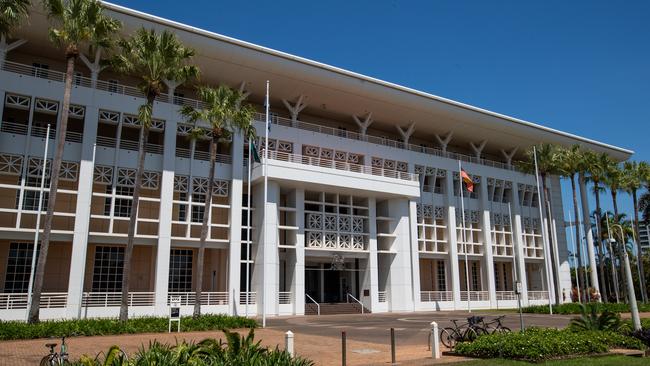Cunningham: NT Gov’t should redistribute public servants from office jobs to the frontline
The NT Government’s necessary and overdue decision to recruit an extra 200 police officers comes with one significant headache. It will add another 200 people to the Territory’s bloated public service, writes Matt Cunningham.

News
Don't miss out on the headlines from News. Followed categories will be added to My News.
The NT Government’s necessary and overdue decision to recruit an extra 200 police officers comes with one significant headache.
It will add another 200 people to the Territory’s bloated public service.
There’s little doubt we need the police; we also need more nurses, teachers and child protection workers.
But we can’t afford to have the size of the public sector – already the biggest drain on the NT’s budget – continuing to get bigger.
The sensible thing to do would be to redistribute public servants from office jobs to the frontline.
The 2019 Langoulant report into budget repair found about 40 per cent of the Territory’s public servant work in administration and management.
And while frontline workers are overwhelmed and burnt out, there’s plenty in the administration and management stream who appear to be busy doing nothing.
A recent example indicates there is plenty of scope for an increase in productivity.
This week the coronial inquest into the death of Kumanjayi Walker released a report by Queensland academic David Hollinsworth outlining strategies to eliminate racism within the Northern Territory Government, and two subsequent letters from senior executives from the Department of Attorney-General and Justice, detailing the steps being taken to implement the report’s recommendations.

The original report was completed in August 2022.
On March 6, 2023, Attorney-General and Justice department chief executive Gemma Lake wrote to Coroner Elisabeth Armitage.
“The report is yet to be considered by the Northern Territory Government,” she said.
“In accordance with the usual processes and governance for the AJA (Aboriginal Justice Agreement), the report is currently under consideration by the Aboriginal Justice Agreement Governance Committee (AJAGC) and a workshop is planned for late March 2023 to consider the recommendations in the report in detail and decide how the AJAGC will recommend they be progressed.”
You read that right.
More than six months after receiving the report, the department’s only action was to plan a workshop which would make recommendations on how to progress the report’s recommendations.
But it gets better.
More than a year later, in March 2024, counsel assisting the Coroner, Peggy Dwyer SC, wrote to the department requesting an update on how the plan to make recommendations on how best to progress the report’s recommendations was coming along.
Acting chief executive Leonique Swart wrote back.
“I advise the AJAGC held a workshop on March 28, 2023 to discuss next steps from the report. This workshop led to a second engagement of Professor Hollinsworth, to prepare an implementation strategy and action plan deriving from his recommendations (the Action Plan).”

So the workshop called to make recommendations on how to progress the recommendations in the report, came up with a plan to get the same bloke who wrote the report back to develop an action plan on how best to implement the report’s recommendations.
Ms Swart’s letter continues.
“In November 2023, Professor Hollinsworth provided a first draft of the Action Plan to the Aboriginal Justice Unit (AJU) of the AGD. The AJU (not to be confused with the AJA or the AJAGC) subsequently provided feedback on the draft Action Plan. On April 3 2024 Professor Hollinsworth provided a second draft. The AJU and the Professor met again on April 10, 2024. It is understood that Professor Hollinsworth is now finalising the Action Plan. Once finalised it is anticipated the Action Plan will be provided to the Aboriginal Justice Agreement (that’s the AJA, not the AJU) governance committees for consideration and endorsement. It is anticipated that this will occur in the coming months, enabling the Report and Action Plan to be provided to the Attorney-General by June/July 2024.”
Put simply, a report completed in its original form in August 2022 has now been the subject of workshops, meetings, strategies, reviews, drafts and action plans.
In a best-case scenario it will finally be delivered to the relevant minister (accompanied by the action plan developed during the workshops, reviews and meetings) almost two years after it was written.
By the time it arrives, the government will be just weeks away from entering caretaker mode and there’s every chance a new administration will put the report straight in the bin.
Meanwhile, our frontline workers are so stretched it takes eight hours to be seen in the Royal Darwin Hospital’s emergency department, and our police can only attend the most serious incidents.
How did we get this so horribly wrong, and who will be brave enough to fix it?





